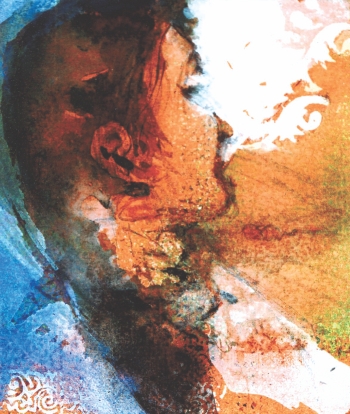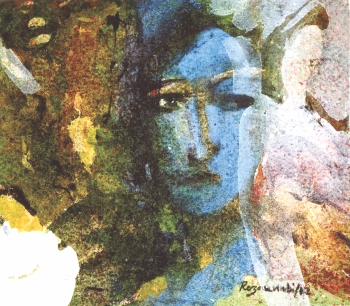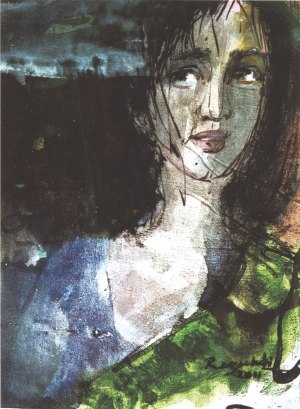| Home - Back Issues - The Team - Contact Us |
 |
| Volume 11 |Issue 21| May 25, 2012 | |
|
|
Art
Reza's Face Artist Rezaunnabi talks about his enduring passion – lyrical dots on a magical canvas Fayza Haq "I take everything from Nature,” says Rezaunnabi, whose solo exhibition on faces began a week ago at Shilpangan and will continue for another week. Reza was inspired by his father, a police officer who always wished to be an artist, as well as the cultural backdrop he grew up in, and the art, music and writing of his times. In the Dhaka College of Art, it was Reza's brother who remained his steadfast supporter, as all elder siblings tend to be. His teachers, Shahid Kabir, Farida Zaman, Hamiduzzaman and Abdul Baset moved him, as did Mohammed Kibria, Shafiuddin Ahmed, and, more importantly, Zainul Abedin, who guided and inspired all.
Senior art teachers like Baset, Anwar, and Razzak were among his teachers. In Masters classes, art students went into abstraction and experimentation back then, but they didn't go into installation, which they do today. Since he lived with his family, Reza sketched in Chapainawabganj and Brahmanbaria. He admired the light and shade effect of the Dutch painters, especially Rembrandt, whom he studied in Amstradam, Rotterdam, Paris and Cologne. Through the influence of French Impressionistic painters, especially, Gauguin and Van Gogh, he says that he learnt about the dots and splashes and converging of forms and colours. Reza feels that in the dots lie the beauty of Renaissance painters like Rubens, Titians, Michelangelo and De Vinci. "Artists like August Renoir, Cezanne, and Degas…If you see them from nearby," he says, "they appear rough, but not so when seen from afar." The gradation and tonality are learnt from the same artists, he says. The concept of “digital” and the density of the image also come from them. “In an inch of a square of a painting, the resolution of the dots of the image and colour measure accordingly, which gave rise to the idea of the digital camera” explains the artist, who revels in nature, and has now gone into faces, to bring interest and variation in his work.
For the painter, the off beaten track is interesting. For the twenty-first century, the installation vogue is a creation, and art work a science, he feels. Rabindranath Tagore remains at the root of the painter's imagination. Reza listens to the words of Kabi Guru through the element of music and then translates them using his own medium. Sometimes the artist elaborates the beauty of a woman he has not actually seen on a canvas by listening to the words of the poet. The girl's face is suggested in the words, colours and images of the songs – the jet-black, brown, red and other earthy colours. In another image, a few lines of a poem are elaborated and composed in calligraphy to add interest and gravity to the compositions. The artist has tried to capture the feelings of the poem through images. The portraits are from the artist's imagination, says the painter, who takes the Bard for inspiration. Reza adds lines and space to each of his compositions to create interest. Well-known lines, geometrical and lyrical, and silhouettes of profiles speak of the different changes in the person, who is being presented and portrayed. The artist's textual experience proves mysterious and fascinating. Remembrances of the past play on the subject and the artist himself, who is trying to present the subject and elements around him.
|
||||||||||||
|


